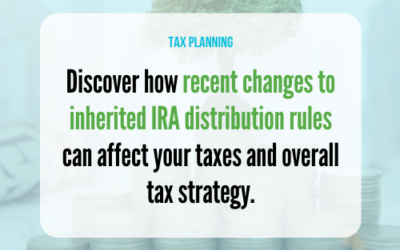Tax Planning
Reduce Taxes by Using the Best Cryptocurrency Account Method
Bradford Tax Institute
Let’s say you purchased one Bitcoin 14 months ago for $15,000 and another Bitcoin six months later for $40,000. Today, you sell one Bitcoin for $60,000. You’re a genius!
But is your taxable gain:
- $45,000 ($60,000 – $15,000), or
- $20,000 ($60,000 – 40,000)?
It depends on your crypto accounting method.
It’s up to you to choose the method you use to calculate crypto gains and losses. At a time of surging cryptocurrency prices, the method you use can have a big impact on the amount of your taxable gains.
FIFO: The Default Method
FIFO (first in, first out) is the default method of crypto accounting. It must be used if you don’t specify another method.
With this method, crypto units are deemed to have been sold, exchanged, or otherwise disposed of in chronological order beginning with the earliest unit you purchased or acquired—that is, on a first-in, first-out basis.(1)
Example. You bought one Bitcoin on January 1, 2022, for $15,000. You bought another Bitcoin on January 1, 2023, for $25,000. You bought another Bitcoin on March 1, 2023, for $40,000. On January 1, 2024, you sold one Bitcoin for $60,000.
Using the FIFO method, your cost basis for the sale is $15,000 since that was the cost of the first Bitcoin you acquired. You have a capital gain of $45,000 ($60,000 – $15,000). This is a long-term capital gain since the crypto deemed sold was held for more than one year.
Since it’s a long-term capital gain, your maximum tax rate is 20 percent—23.8 percent if the net investment income tax (NIIT) applies—compared with up to 37 percent for ordinary income (40.3 percent if the NIIT applies).
FIFO is a conservative, IRS-approved method. The IRS will never complain if you use it. FIFO is also simple to use
—since the oldest crypto units are sold first, you just take the purchase date and price to determine cost basis.
FIFO can also maximize long-term capital gains because selling the oldest unit first makes it easier to satisfy the one-year holding period.
Another advantage of FIFO is that currently it can be applied universally to all the crypto units a taxpayer owns, regardless of the number of wallets or exchanges in which they are held. In other words, FIFO need not be applied to each wallet or exchange separately.
Such universal pooling of digital assets makes FIFO easier to apply than specific identification. But proposed IRS regulations that have yet to take effect prohibit universal pooling (as we discuss below).
On the other hand, FIFO is an inflexible method that does not always result in the lowest cost basis for digital assets, which could lead to higher capital gains taxes. This is particularly likely in a rising market since you’ll be selling the oldest crypto with what is often the smallest cost basis.
Specific Identification Method
Instead of FIFO, you can use the specific identification method of accounting.(2) Specific identification permits taxpayers to identify which crypto units are being sold in a particular transaction.
But it can be difficult or impossible for crypto owners to identify specific digital assets before a trade. Most centralized crypto exchanges don’t provide a notification mechanism to support specific identification. Likewise, unhosted digital wallets lack mechanisms for users to specify which digital assets to sell before a transaction occurs.
The workaround is for crypto owners to use accounting methods that, like FIFO, calculate crypto basis, gains, and losses after the trade. The most widely used methods are HIFO and LIFO. Technically, these are also specific identification methods—because any method other than FIFO is a specific identification method.
HIFO. HIFO is short for “highest in, first out.” With HIFO, you are deemed to sell the crypto units with the highest cost basis first.
Because HIFO sells your crypto with the highest cost basis first, it ordinarily results in the lowest capital gains and the largest capital losses. But using HIFO can also cause you to lose long-term capital gains treatment, since the highest-cost units may not have been held for more than one year.
Example. You bought one Bitcoin on January 1, 2022, for $15,000. You bought another Bitcoin on January 1, 2023, for $25,000. You bought another Bitcoin on March 1, 2023, for $40,000. On January 1, 2024, you sold one Bitcoin for $60,000.
Using the HIFO method, your cost basis for the sale is $40,000 since that is the highest-cost Bitcoin you acquired. You have a short-term capital gain of $20,000 ($60,000 – $40,000) that’s taxed at ordinary income rates.
LIFO. LIFO is short for “last in, first out.” It is the opposite of FIFO: the last crypto units you acquired become the first units that you sell.
Example. You bought one Bitcoin on January 1, 2022, for $15,000. You bought another Bitcoin on January 1, 2023, for $25,000. You bought another Bitcoin on January 1, 2023, for $40,000. You bought another Bitcoin on March 1, 2023, for $35,000. On January 1, 2024, you sold one Bitcoin for $60,000.
Using the LIFO method, your cost basis for the sale is $35,000 since that is the cost of the last Bitcoin you acquired. You have a short-term capital gain of $25,000 ($60,000 – $35,000).
Requirements to use specific identification. Using HIFO, LIFO, or other specific identification methods requires meticulous record keeping. If you lack adequate records, on audit the IRS will default to the FIFO method, which can result in more taxable profit.
Your records must contain(3):
- the date and time each crypto unit was acquired,
- your basis and the fair market value of each unit at the time it was acquired,
- the date and time each unit was sold or disposed of, and
- the fair market value of each unit when sold or disposed of.
Specific identification must be implemented on an exchange-by-exchange and wallet-by-wallet basis. You can’t pool all your accounts together as you currently can with FIFO.
Some crypto exchanges allow users to elect specific identification within their platform. However, many don’t. Nor is this an option when you use an unhosted wallet to store and trade your crypto. In this event, you must do the proper record keeping yourself.
It’s next to impossible to create these records manually, particularly if you have many trades. Most crypto owners use specialized crypto tax software that automates the basis and gain/loss calculations and can even fill out the required tax forms.
To use the software, you export your crypto transaction histories from each exchange or wallet you use and specify your accounting method.
Can You Change Your Crypto Accounting Method?
You can change your crypto accounting method from year to year—for example, you can change from FIFO to a specific identification method such as HIFO.
Using FIFO or a specific identification method such as HIFO or FIFO to determine the basis of digital assets is not a method of accounting.(4) Therefore, permission from the IRS is not needed for such changes. Note that your tax return doesn’t have to disclose which method you use.
Proposed IRS Regulations
Proposed IRS regulations scheduled to take effect for the 2025 tax year would make major changes in crypto tax accounting. To use specific identification (including HIFO or LIFO), crypto owners would have to identify each unit to be sold no later than the time of sale. If a crypto owner fails to do so, the FIFO accounting method must be used.(5)
For crypto held in a wallet or account, the taxpayer’s records must timely identify the particular units to be sold or otherwise disposed of. For crypto in the custody of a “digital asset broker” (broadly defined to include exchanges and custodial wallet services), the taxpayer must provide adequate identification to the broker no later than the time of sale.
As mentioned above, it can be practically impossible for crypto owners to identify specific digital assets before a trade. Moreover, most crypto exchanges don’t provide a notification mechanism to support specific identification. Thus, if the proposed regulation goes into effect as written, it may prevent use of the specific identification method by many crypto owners.
The proposed regulations also require that FIFO be applied per wallet or account. Universal pooling of digital assets across all accounts is not allowed.
In addition, starting with the 2026 tax year, digital brokers must file a new IRS Form 1099-DA that reports(6):
- the adjusted basis of the digital asset sold,
- the date and time the digital asset was purchased, and
- whether any gain or loss on the digital asset sold is long-term or short-term.
Brokers are not currently required to file any 1099 forms with the IRS to report crypto trading gains and losses, although some do file Form 1099-K or Form 1099-B.
The IRS’s proposed regulations have met with widespread opposition and could be changed or further delayed.
Takeaways
Here are four takeaways from this article:
- FIFO (first in, first out) is the default cost basis method for cryptocurrency, but crypto owners are allowed to use specific identification or a specific identification method such as HIFO or LIFO.
- Use of specific identification or a specific identification method such as HIFO or LIFO to calculate crypto cost basis can minimize gains but requires more record keeping.
- Crypto owners should consider using crypto tax software to calculate their cost basis and simplify record keeping.
- Crypto cost basis methods such as FIFO and HIFO are not methods of accounting. You don’t need to disclose them on your tax return, and you don’t need IRS permission to change methods from year to year.
- IRS Frequently Asked Questions on Virtual Currency Transactions, updated June 27, 2024, A41.
- Ibid., A39.
- Ibid., A40.
- Prop. Reg. Section 1.1012-1(j)(4).
- Prop. Reg. Section 1.1012-1(j).
- Prop. Reg. Section 1.6045–1(d)(2)(i).

SERVICES WE OFFER RELATED TO THIS TOPIC
The information contained in this post is for general use and educational purposes only. However, we do offer specific services to our clients to help them implement the strategies mentioned above. For specific information and to determine if these services may be a good fit for you, please select any of the services listed below.
The Smart Tax Minimizer ℠ (For Consumers and Home-Based Businesses)
The Smart Tax Planning System for Business Owners ℠
The Smart Financial Independence Blueprint ℠
The 4x4 Financial Independence Plan ℠
Tax Planning
Coaching and Consulting
Savvy Cybersecurity Quick Reference Guide 2024
Financial GuidesIn today’s digital world, cybersecurity is a growing concern. With data breaches, scams, and identity...
Cybersecurity Business Protection Checklist 2024
Financial Guides In today's digital landscape, safeguarding your business from cybersecurity threats is more crucial...
Inherited an IRA? Four Things Every Beneficiary Should Know
Inherited IRA distribution rules have changed in ways that can significantly impact your taxes and tax...
Investment Advisory Services are offered through Lifetime Financial, Inc., a Registered Investment Advisory. Insurance and other financial products and services are offered through Lifetime Paradigm, Inc. or Lifetime Paradigm Insurance Services. Neither Lifetime Financial, Inc. nor Lifetime Paradigm, Inc., or its associates and subsidiaries provide any specific tax or legal advice. Only guidance is provided in these areas. For specific recommendations please consult with a qualified, licensed Advisor. Past performance is no guarantee of future results. Your results can and will vary. Investments are subject to risk, including market and interest rate fluctuations. Investors can and do lose money and, unless otherwise noted, they are not guaranteed. Information provided is for educational purposes only and is not intended for the sale or purchase of any specific securities product, service or investment strategy. BE SURE TO FIRST CONSULT WITH A QUALIFIED FINANCIAL ADVISER, TAX PROFESSIONAL, OR ATTORNEY BEFORE IMPLEMENTING ANY STRATEGY OR RECOMMENDATION DISCUSSED HEREIN.
This message is intended for the use of the individual or entity to which it is addressed and may contain information that is privileged, confidential and exempt from disclosure under applicable law. If you are not the intended recipient, any dissemination, distribution or copying of this communication is strictly prohibited. If you think you have received this communication in error, please notify us immediately by reply e-mail or by telephone (800) 810-1736 and delete the original message.
This notice is required by IRS Circular 230, which regulates written communications about federal tax matters between tax advisors and their clients. To the extent the preceding correspondence and/or any attachment is a written tax advice communication, it is not a full "covered opinion." Accordingly, this advice is not intended and cannot be used for the purpose of avoiding penalties that may be imposed by the IRS.





